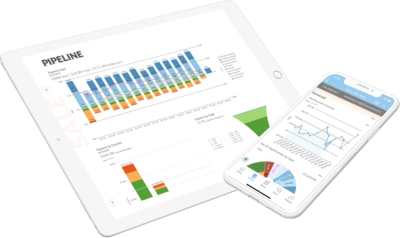The risks of collecting and storing dark data
Every moment of everyday data is being created, collected, and stored by businesses all over the world. This data can be incredibly valuable to these businesses, providing insights into everything from customer behavior to trends in the marketplace.
However, some data can be more valuable than others. In particular, dark data–data that is collected but not used–can be a significant liability for businesses. This data can be difficult to manage and easy for criminals to exploit.
As data becomes more valuable, it is crucial for businesses to understand the risks associated with dark data and take steps to protect themselves.
In this guide, we are going to look at some of the risks associated with dark data and what businesses can do to mitigate them.
What is dark data?
To understand the risks of dark data, it is first important to understand what dark data is. Dark data is defined as data that is collected but not used by the collector for any business purpose.
This data can come from a variety of sources, including social media, Internet of Things devices, and even security cameras. Often, this data is collected without the knowledge of the people who generate it.
Dark data can offer incredible insights if used correctly. The benefits of dark data have been well documented, and businesses that know how to harness it can gain a competitive advantage. However, dark data can also be a major liability.
This is because dark data is often unstructured and difficult to manage. It can also be easy to exploit, and if you don’t have the right security measures in place, it can be stolen or used to commit crimes.

What are the dangers of dark data for businesses?
There are a number of dangers associated with dark data for businesses. These include:
1. Data breaches from within the organization
One of the biggest dangers of dark data is that it can be used to commit crimes from within the organization. If you don’t have the right security measures in place, criminals can access your dark data and use it to commit fraud or steal sensitive information. It can also be used to blackmail employees or customers.
2. Data breaches from outside the organization
Another danger of dark data is that criminals can steal it from outside the organization. This data can then be used to commit crimes or sell sensitive information on the black market.
3. Regulatory fines and penalties
If you collect dark data without the consent of the people who generate it, you could be subject to regulatory fines and penalties. In some cases, you could even be sued by the people whose data you’ve collected.
4. Reputation damage
If your dark data is stolen or used to commit a crime, it can damage your reputation. This can lead to lost business and increased scrutiny from regulators.
5. Inefficient use of resources
Collecting and storing dark data can be incredibly resource intensive. If you don’t have a plan for how to use this data, it can waste time and money. Many organizations that don’t use dark data effectively end up deleting it, which can be a costly mistake.
How to collect and store dark data
If you decide to collect and store dark data, there are a few things you need to keep in mind.
Step 1: Create a plan
The first step is to create a plan for how you’re going to collect and store dark data. This plan should include the following:
1. The types of data you’re going to collect: You need to decide what types of dark data you’re going to collect and why. This will help you determine what methods you’re going to use to collect it.
2. The methods you will use to collect the data: You need to decide how you will collect dark data. This could include using social media scraping tools, Internet of Things devices, or even security cameras.
3. The methods you will use to store the data: You need to decide how you will store dark data. This could include using a database, a data warehouse, or a cloud-based storage system.
4. The security measures you’re going to put in place: You need to decide how you’re going to protect dark data from being stolen or used to commit crimes. This could include encrypting the data, using access control measures, or even physically securing the data.
5. The plan for how you will use the data: You need to have a plan for how you will use dark data. This could include using it for analytics, marketing, or research purposes.

Step 2: Collect the data
Once you have a plan in place, you can start collecting dark data. There are a number of ways you can do this, including using social media scraping tools, Internet of Things devices, or BI platforms.
You are likely already collecting quite a bit of dark data without even realizing it. For example, every time someone visits your website, you’re collecting data about the device they’re using and what pages they’re viewing.
Step 3: Store the data
Once you’ve collected dark data, you need to store it somewhere. This is where a data lake, data warehouse, or cloud-based storage system comes in.
Data lakes are a great option for storing dark data because they’re designed to handle large amounts of unstructured data. Data warehouses are also a good choice, but they’re more expensive and require more resources to maintain. Cloud-based storage systems are a cheaper option, but they’re less secure.
Step 4: Protect the data
Once you’ve collected and stored dark data, you need to protect it from being stolen or used to commit crimes. This could include encrypting the data, using access control measures, or even physically securing the data.
One of the best ways to protect dark data is to never collect it in the first place. If you don’t have the data, then it can’t be stolen or used to commit crimes.
However, dark data can offer some benefits, so it may be worthwhile to invest in the collection. Another way to protect dark data is to use encryption. This will make it difficult for anyone who steals the data to read it.
How to protect your business from the risks of dark data
So how can you ensure that your business doesn’t fall victim to the risks of dark data? Here are a few suggestions:
1. Educate your employees
Make sure your employees understand the risks associated with dark data. Offering basic knowledge about dark data can help your teams be more vigilant about the types of data they’re collecting and storing.
2. Implement security measures
As we mentioned, it’s important to encrypt dark data and use access control measures. These steps can help to protect your data in the event that it is stolen.
3. Review your data collection practices
Take a close look at how you collect dark data. Are there any areas where you could improve your practice? Audit your processes to ensure that you’re only collecting the data you need and that you have a plan for how you will use it.
4. Invest in data management
Data management is critical for any business, but it’s especially important when it comes to dark data. Make sure you have a plan in place for how you’re going to collect, store, and protect your data.
5. Seek professional help
If you’re unsure how to handle dark data, it’s best to seek professional help. There are a number of companies that specialize in dark data management, and they can help you to develop a plan that meets your specific needs.
The bottom line
Dark data can be a major liability for businesses. Understanding the risks associated with dark data and taking steps to protect your business is essential. Educating your employees, implementing security measures, and investing in data management are all good ways to protect your business from the risks of dark data.
Check out some related resources:

Sisense Alternatives & Competitors

10 Power BI Alternatives and Competitors in 2025






